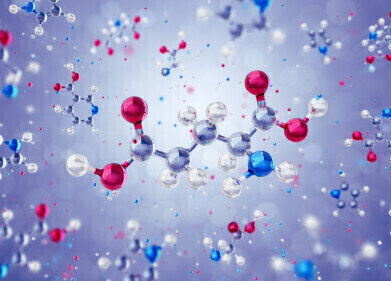Ion chromatography (IC)
Using Chromatography to Detect Drugs from Fingerprints
Oct 18 2017
Remember your school chemistry when you discovered that black ink is actually a mixture of other colours? The experiment that you carried out as probably done on either a round filter paper or strips of filter paper. Now, a paper published in the journal Clinical Chemistry — Rapid, Secure Drug Testing Using Fingerprint Development and Paper Spray Mass Spectrometry — has revealed another use for the humble chromatography paper that could leave drugs users sweating.
What is paper spray mass-spectrometry?
Researchers have been searching for a sensitive method to detect biomolecules for many years. When combined with mass spectrometry and a sample database, a powerful detection system could be developed. What was needed was a simple easy way to make a sample that was suitable for mass spectrometry — an ionized sample. The use of ionized samples in mass spectrometry is discussed in the article, MS Atmospheric Pressure Ionisation Sources: Their Use and Applicability.
Paper spray — as a technique to generate a sample for mass spectrometry —was first described in 2010 by scientists from China and the USA. It is a simple technique where a sample is placed on a piece of chromatography paper or the paper can be wiped on a surface to pick up traces of a sample. The paper is either wetted before the sample is applied or after, and then a high voltage is applied. This creates ions, which can then be used as samples for the mass spectrometer.
The new research, carried out by scientists from the university of Surrey and partners, has taken the process and developed a method for detecting cocaine in fingerprints. In a press release from the university, Dr Costa, one of the team’s leaders said:
“This is the first time it has ever been used to detect the presence of drugs in fingerprints, and our results show the technique was 99% effective in detecting cocaine use among the patients.”
Don’t bother trying to wash it off
Fingerprints were taken from patients attending a drug rehabilitation centre and from another group not known to be drug users. The volunteers were all asked to wash their hands before the fingerprints were taken on pieces of prepared chromatography paper. The fingerprints were then developed to reveal the ridges of the fingerprint — and thus the identity of the owner — before the mass spectrometry analysis.
What the system detects are the metabolites of cocaine — benzoylecgonine and methylecgonine — which are excreted from our bodies and can be found in fingerprint residues — even after washing. As Dr Bailey from the University of Surrey states in the press release:
“This is a real breakthrough in our work to bring a real time, non-invasive drug-testing method to the market that will provide a definitive result in a matter of minutes – we are already working on a 30 second method.”
The test, which is non-invasive and simple to use can’t be faked and the samples also reveals the identity of the sample’s owner. Foolproof?
Events
Apr 22 2025 Kintex, South Korea
Analytica Anacon India & IndiaLabExpo
Apr 23 2025 Mumbai, India
Apr 27 2025 Portland, OR, USA
May 11 2025 Vienna, Austria
May 18 2025 Tempe. AZ, USA














